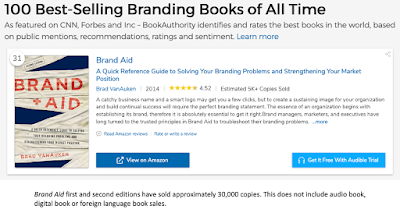Stories are the glue that holds societies together. Consider the stories of Plymouth Rock and the Pilgrims, the Boston Tea Party, the Revolutionary War, the Declaration of Independence, the Civil War, George Washington, Thomas Jefferson and Abraham Lincoln. These are the basis of our American Heritage. They provide us with a sense of history and values and common purpose.
Consider the Biblical stories of Adam and Eve, Noah and the Ark, David and Goliath, Jonah and the whale, Moses and the parting of the Red Sea, and more central to the Christian message, the birth of Christ, Jesus feeding the 5,000, and the crucifixion and resurrection of Christ. These stories unite more than 2 billion Christians across the world today.
Consider your own family's stories. Your wedding night. Your honeymoon. Your first child. Your best vacation. Your child's first major accomplishment or recognition. A favorite place to which you returned year after year. A very funny moment. A shared tragedy. A special holiday. These memories are the glue that holds your family together.
I have been involved in Boy Scouts for more than 50 years. The memories that keep me coming back are the summers spent at Massawepie Scout Camps in the Adirondack Mountains, the 70-mile trek at Philmont Scout Ranch in Cimarron, New Mexico, the National Jamboree at Fort A.P. Hill near Bowling Green, Virginia, and the World Jamboree at Summit Bechtel Reserve in Glen Jean, West Virginia. I can and do share these memories with other Scouters across the US.
Republicans enjoy recounting tales about famous Republican presidents such as Abraham Lincoln, Theodore Roosevelt and Ronald Reagan. While Democrats like to reminisce about the personalities, values and accomplishments of Franklin D. Roosevelt, John F. Kennedy and Barak Obama.
Whether you are a corporation, a not-for-profit organization, an industry conference, a brand of single malt scotch, a sports team, a rock band, a seaside town, a resort community or something else, you have your stories and your shared history.
Every society throughout history has had its stories. Every culture has had its myths and its folktales. Every religion has its parables and its stories about its founder and its history.
Stories provide context and meaning. They reinforce shared values. They tell cautionary tales. They imply standards of behavior. They provide a sense of heritage. And, most importantly, they create a sense of belonging to something bigger than oneself. They are what bind tribes together.
What are your brand's stories? Do they talk about the brand's origins? Do they convey certain personality attributes? Do they reinforce shared values? Do they reinforce your legendary service? Your extraordinary quality? Do they create a sense of community? Do they establish an emotional connection with its intended audiences? Are they memorable? Do they create a rallying cry?
I would contend that if a brand does not have its stories, it may be a brand in name only. I wish you great success in crafting and telling your brand's stories.



























